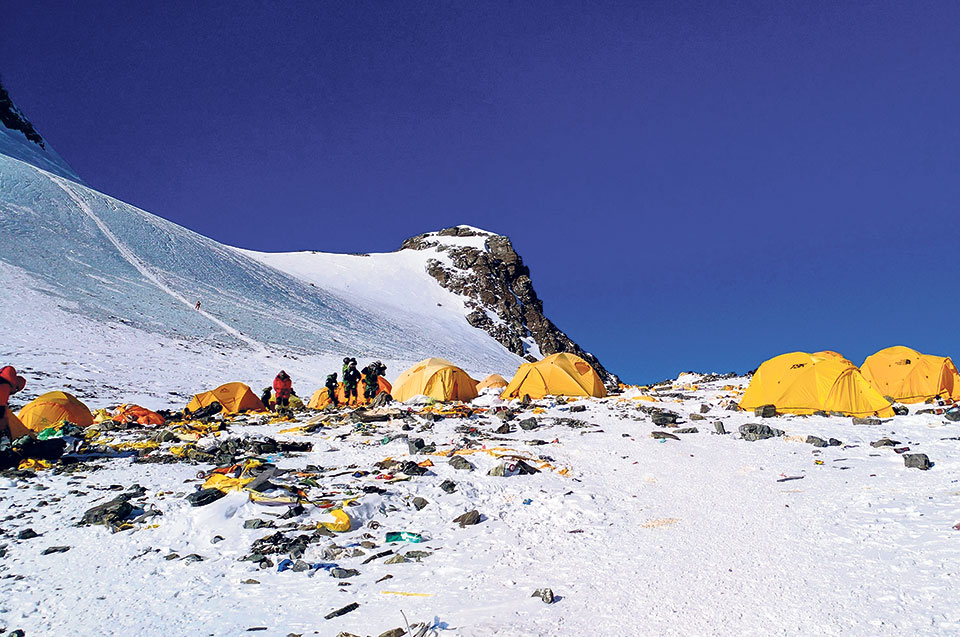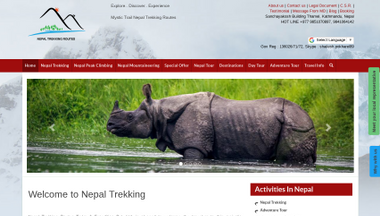Everest, the highest point of the planet, is the only place in the world where people pass by deceased without any affection…
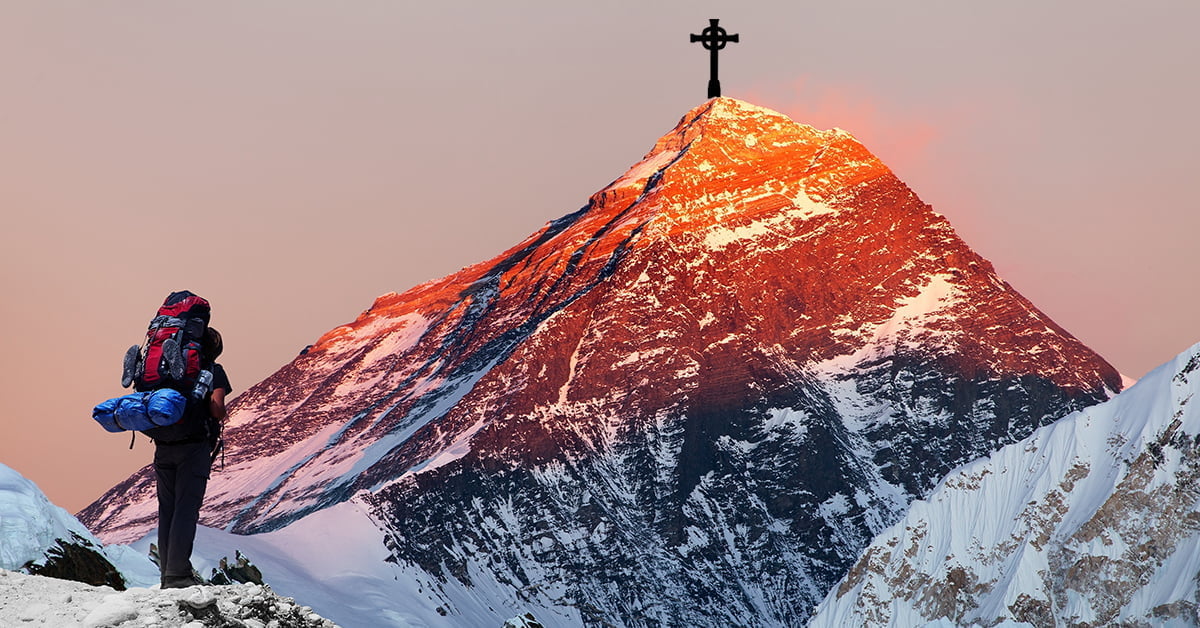
As a general matter, after yet another tragedy on the slopes of Mount Everest people ask a reasonable question: can these climbers’ dead bodies be removed from the slopes of the highest mountain? Debate is fueled by the press, the journalists calls the situation “the highest open graveyard of the world” and “death in the clouds”.
How many are out there?
From 1922 to 2018 nearly 300 people died on the slopes of Mount Everest. Probably the very first known death was related to the missing English mountaineers, George Mallory and Andrew Irwine, in 1924. Mallory’s body was accidentally found only in 1999 while there is still no evidence of Irwine’s carcass.
Chomolungma, or Mother Mountain, takes away her children. More than a third of the victims are Sherpa People: their death counting started in 1922. According to statistics, Sherpa People have 3.5 times more death chances on Everest than any infantryman during first four years of war in Iraq.

Andrew Irwine and George Mallory (on the right).
Generally people die on Everest because of avalanches and incidences, which are really lethal at high altitudes. Until 2017, 292 people died on slopes, and this number, unfortunately, is likely to grow. During 2017 (which can not be considered fatal year), Chomolungma took 6 victims, including Ueli Steck — professional and experienced climber from Switzerland (two Piolet d’Or award owner).
Why?
Climbers call the zone above 8,000 meters the “Red Zone” or “Death Zone”. Anyone reaching this point is aware about the fact that there are no rescuers in case they get sick or an accident happens. The first to put this term in circulation was Edouard Wyss-Dunant, the head of the Swiss expedition of 1952.
Atmospheric pressure at altitudes above 8,000 is below 35.6 kPa (267 mm Hg). Air oxygen level is not enough to stay alive (for example, on the Central European Flatlands at a height of 50 to 100 m the pressure is 760 mm Hg or 101 kPa).
To understand what climbers feel on top of the world, imagine yourself on the wing of a flying plane, or try to breathe three times less often. This at least a little will help you to imagine what climbers feel at the top of the world. In these conditions they should go up the complex terrain, sometimes overcoming the vertical rocky areas, and at a temperature of -20 ° to -40 °C …
Sergey Kofanov, twice Mount Everest climber, mountain guide, participant of Everest rescue missions, founder of MountainPlanet.com project
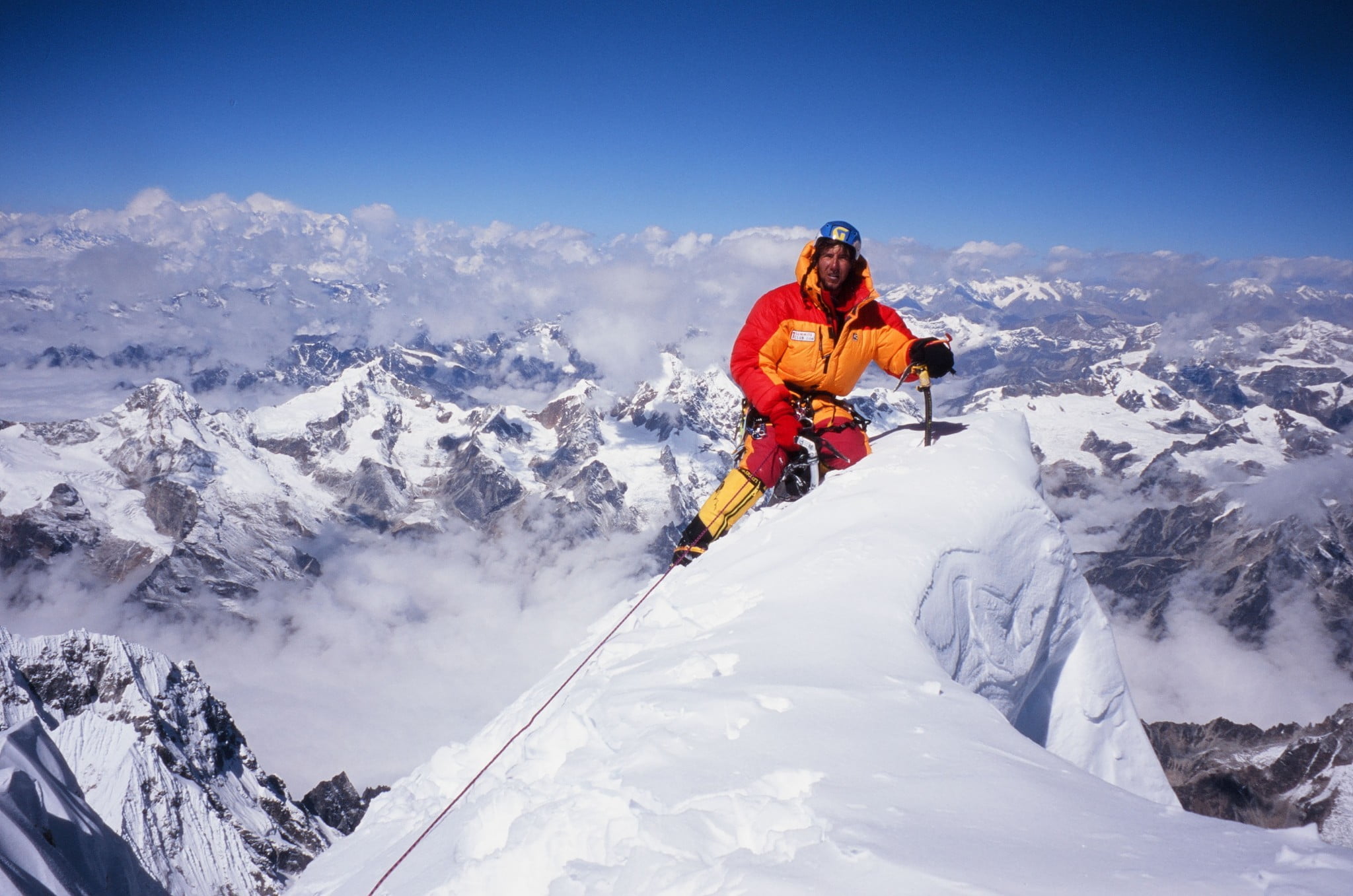
Sergey Kofanov on Jannu Peak (Phoktanglungma).
At an altitude of more than 8 thousand meters a person can hardly bear himself. A trained athlete or guide keeps a 10 kg backpack with oxygen and additional things. With all this equipment, you can move at an average speed of one or two steps per minute. It seems unlikely that at the same time someone can lift and drag a man on himself (if we are talking about a spontaneous rescue operation). Particularly as the total weight of the climber in full gear ranges from 70 to 100 kg.
Winds on the Everest can reach up to 78 m/s (175 miles per hour). As a comparison: a 5th hurricane category wind speed (5th category of complexity) is set at 70 m/s (156 miles per hour). Its destructive power is difficult to describe: in 2006, the fifth-grade hurricane “Matthew” in Florida destroyed 3,5 thousand buildings and killed almost 900 people.
Nowadays, also thanks to modern weather forecasts, organizers plan their ascents so that people do not climb during hurricanes: commercial expeditions pay special attention to the forecasting.
But it’s not only about wind and cold: besides, there are still earthquakes, failure of the body system in extreme conditions; failure of oxygen equipment, rope breakage, mistakes while gear choosing. As a result, even professional alpinists, Sherpa People, and those who wanted to exceed human limits from the Roof of the World, lose their lives.
No Man’s Land
In such inhuman conditions human laws do not apply either. However, people who never visited the high altitudes often do not understand the rules of the “death zone” and are ready to condemn the climber, who passes by the goner on eight thousand meters, behind his back.
One of the vivid examples that stirred up the mountain community was the death of the solo British climber David Sharp in 2006. Nearly 40 people passed him by. At an altitude of 8,500 meters David was exhausted and couldn’t move anymore, so he sat next to the well-known “Green Boots” corpse (he is considered to be Tsewang Paljor, an Indian climber died on the Everest in 1996).
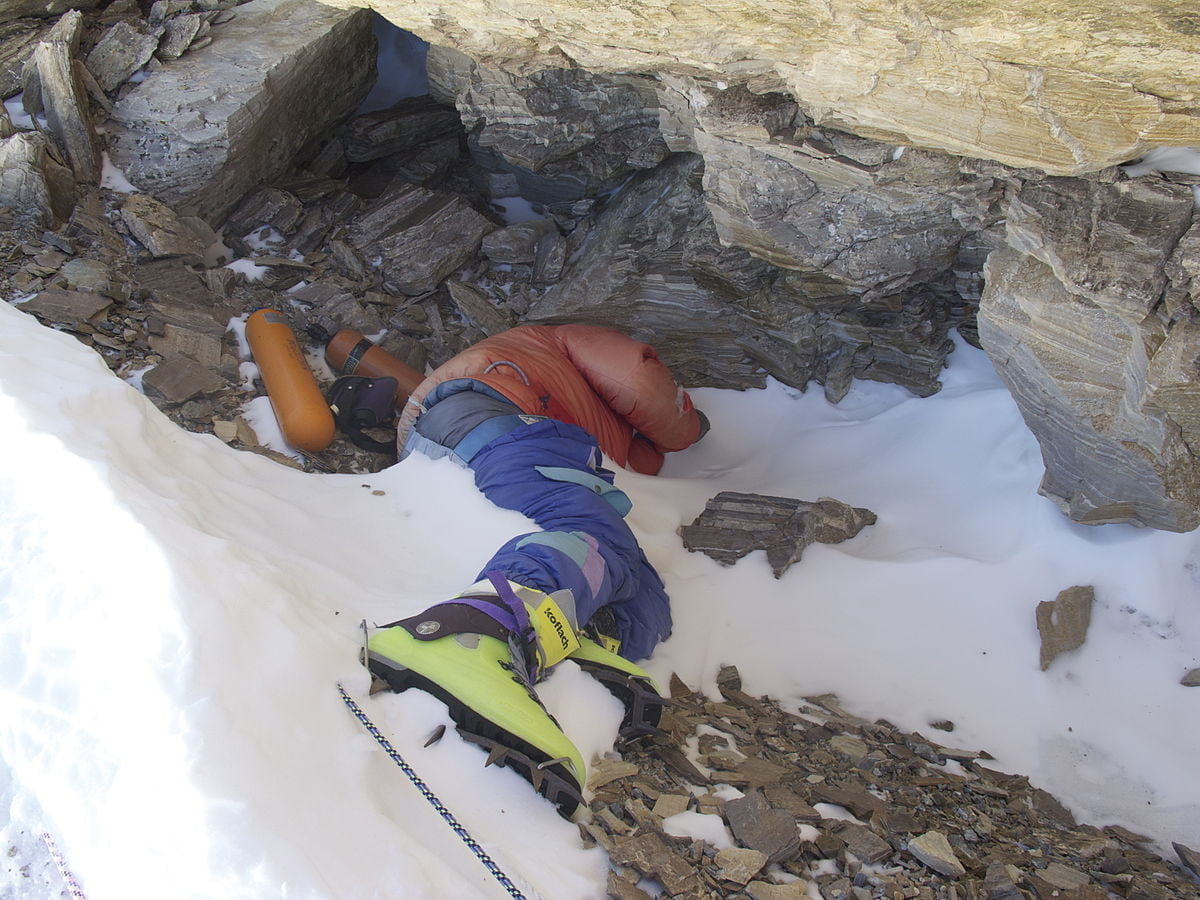
Tsewang Paljor body on 8,500 altitude.
Some climbers simply didn’t notice David Sharp in the dark. Others assured that they exchanged him for Tsewang, because alpinist was wearing… green boots as well, and Sharp didn’t move at all. Whatever happened, the British died of hypothermia (and became the 199th victim of Chomolungma). One year later, as his family requested, his body was moved and hidden from the route.
Sergey Kofanov
The rescue issue on the Everest has many aspects. David Sharp went to the top alone: without guides, without Sherpa People. He put himself in a situation where, in case of emergency, he could be alone on the mountain without help, and, unfortunately, that’s what happened.
It’s hard to accuse those commercial tourists who overpassed Sharp.
People for the first time climbed the route under extreme conditions that were new to their bodies; they aren’t really aware of the situation.
Perhaps it was normal that a climber sat down for a rest? For another thing, all climbers heard about hundreds of bodies on Everest, perhaps this was one of them?
In addition, Sharp was unconscious during most of the time and did not react, even when climbers talked to him or shone a flashlight in his eye. Unfortunately, his fate was sealed.
* source: – https://explorersweb.com/
** see also: – Nepal Celebrates 65th Anniversary of First Ascent of Mt. Everest.
– Today is 65th Anniversary of Everest’s First Ascent.





Filed under: Climbers, climbing, Everest, Expedition, Himalayas, mountaineering, Nepal, Tibet, tragedy | Tagged: Andrew Irwine, Climbers, David Sharp, Dead Bodies, Death Zone, Everest, George Mallory, Sergey Kofanov, Sherpa People | Leave a comment »
